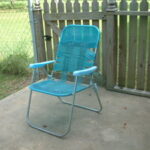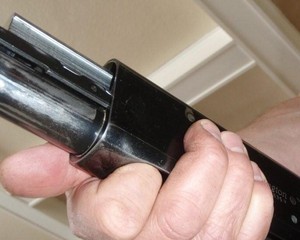For new gun owners there is a lot of things that have to be done, from filing the appropriate paperwork to making sure the new gun is going to be functional when it needs to be. The aim of this article is to help the new firearm owner take one worry off that list and instruct them in basic preventive maintenance. Ready to get started?
Tools of the trade
It may sound simple but the first thing you’re going to need is a solid cleaning kit. A cleaning kit will typically include a nylon bore brush (very important) copper wire cleaning brushes, a bore ‘snake’ or rod, cleaning patches (little cloth squares) lubricating oil and possibly a bottle of solvent. In addition to this the following items may or may not come with an ‘off the shelf’ kit but are extremely useful none the less. Those consist of a box of q-tips (they don’t have to be expensive but you don’t want them falling apart in your weapon either.) a rag, and a set of dental picks. (Ouch I know but bare with me)
Preventive Maintenance
Preventive Maintenance is maintenance conducted when the weapon is in storage or simply when it isn’t being used all that much (during spring and winter especially). The idea of conducting preventive maintenance is to keep your weapon in a functional state and more importantly safe. There is no such thing as having a weapon too clean but it can be too dry, too wet and yes even too dirty (go figure, huh?)
From the best made firearms to the things left in the garage over the spring time, all guns need some degree of maintenance to keep it functional. Sometimes this can consist of a simple wipe down, others it may involve taking the weapon apart (referred to as stripping it). However before you take your weapon apart (or do anything related to it for that matter) make sure that the chamber is empty and the weapon is on safe.
After you’ve inspected your weapon let the bolt ride forward (consult your weapon’s manual on exact procedures or check the Internet.) get a good sized plastic or soft cloth tarp that you can lay your weapon out on a twin sized sheet folded over works pretty well for this, there are also many gun stores that will carry tarps for this purpose but you needn’t spend a lot of money on one.
If you’re unsure of exactly how to break your weapon down please check the manual or Internet, if that doesn’t help go to your local gun dealer or a friend that you are sure knows what they are doing. Many a lost pieces and injuries (both minor and otherwise) could be prevented this way.
Once we’ve laid our tarp out it’s time to begin breaking down the firearm. We’ll begin by dismantling the weapon and breaking it down into it’s respective groups (for rifles: the bolt group, the lower/upper receiver if applicable and the appropriate buffering systems) Pistols are typically a lot easier to break down because of the relatively few number of parts in them. (Buffer assemblies, the slide and frame, easy enough huh?)
If your weapon has been sitting around for some time, or maybe you got it from a flea market or something similar you might have a layer of packing grease on it. Thick or thin it’s designed to keep a weapon relatively rust free over a period of time however it can also be a pain to get off the steel. Some heavy duty paper towels (or if you have them in excess, some good shop towels) are a pretty cost effective way of getting the gunk off your firearm. For getting into tighter areas like under gas tubes and such you can use q-tips or a bore patch and a curved dental pick, just be careful not to press too hard as you might nick the steel and ruin the oxidized coating, thus inviting rust.
So now we’ve got a (basically) clean firearm. The next step is to check it over for carbon residue that accumulates when shooting. If it wasn’t properly cleaned after the last firing session you might find quite a bit there. For now lets assume that you’ve got a decently clean weapon as far as carbon goes. The next step is to put some oil on it. A couple drops is all you’ll need on most parts, if you live in a colder climate (with temps on the lower end of zero degrees) you’ll want to use a thicker oil or if you can’t get it, a few more drops of the standard stuff, though to be honest this isn’t a substitute for the real thing.
Using 2 or 3 drops of oil on the action of your firearm (that is to say the part where the trigger is) is a good way to keep things flowing smoothly when you take it out of storage again, pay particular attention to any visible springs/coils or parts that obviously move. (your manual will probably have some specific areas that need to be oiled, pay attention to them!) After that move to the buffer assemblies (if your weapon has them), use a q-tip to apply some oil around the area where the spring comes in contact with the buffer itself and the outside of the spring where it will be working in the housing.
From here we can move on to the bolt carrier and bolt. As before, with the bolt you’ll want to use a couple drops of oil applied with a q-tip, especially around any interior rims or anything that moves around in the bolt carrier. If you have access to the firing pin a single drop should be fine there as well. A drop of oil on the extractor is also an excellent idea depending on whether or not you can remove it from the bolt itself, if not apply a tiny bit of oil to the lip and let it sink into the mechanism, if you can get into it apply a tiny bit to the spring and lip. For the bolt carrier itself a couple drops of oil, one on either side, should be spread to cover the entire length of it and a drop spread around the inside where the bolt resides.
If your weapon has an exposed hammer, daub a drop around the inside of the area with a q-tip. A cylinder (a revolver) can be treated much the same way, push the cylinder back on it’s guide rod and oil the rod as well as part of the cylinder that rides on it.
A little oil goes a long way, even when storing your firearm over time, you needn’t douse it with oil when a drop or two will do. The best way to keep your weapon clean and rust free over time is to put it in a solid case, a foam lining is a great way to keep your firearms from being damaged but the best defense against rust and other nastiness is to keep your gun in a cool, dry place. Preventive maintenance should be performed at least three times per year, especially when the rainy season comes around. For a few minutes of work the reward is a firearm that will function flawlessly when needed and last you many years to come!


